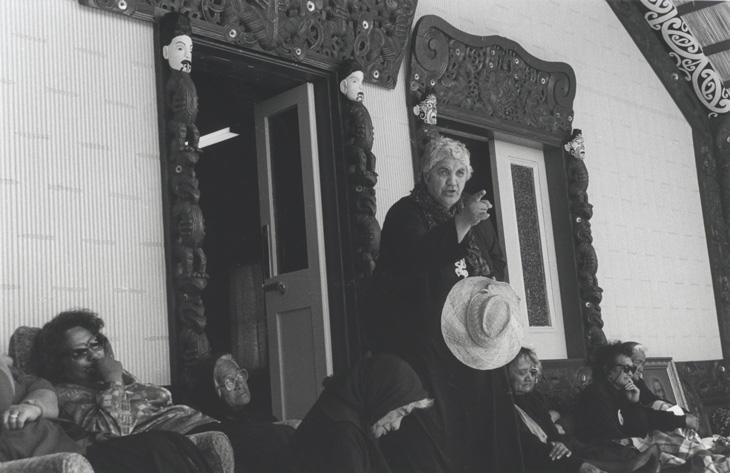 Whaia McClutchie, female orator, 1989
Whaia McClutchie, female orator, 1989
TLF ID R8547
This is a black and white photograph of Whaia McClutchie (1922-1992), speaking in 1989 at the wharenui (meeting house) called Porourangi, at Waiomatatini on the East Coast of the North Island of New Zealand. She stands in front of a doorway, on the porch, holding a broad-brimmed hat in her left hand and pointing with her right hand. She wears a bone carving and a dark coat. Older women are seated on the floor of the porch, some wearing headscarves, and a portrait of a woman is propped up against the wall. The doorway, window, and edges of the wall are framed by ornately carved and decorated posts, lintels, and boards. A kōwhaiwhai (painted scroll) pattern can be seen on a rafter at the top right. The image was taken by documentary photographer Jill Carlyle, and measures 18.8 centimetres high by 29.0 centimetres wide.
